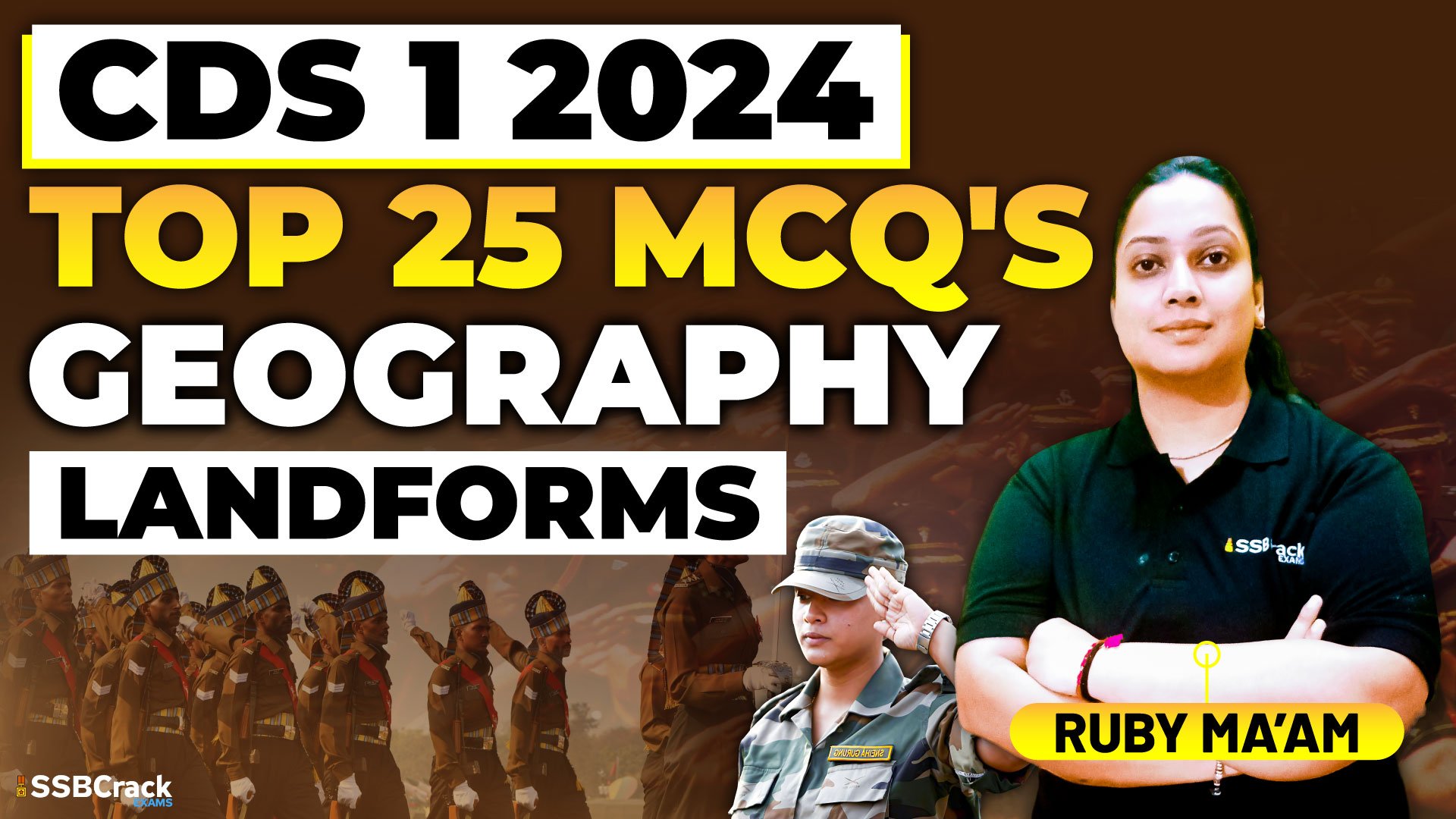Preparing for the Combined Defence Services (CDS) examination involves tackling various subjects, including geography, which often includes questions on landforms. Aspirants aiming to excel in this section must not only understand the different types of landforms but also develop effective strategies for answering multiple-choice questions (MCQs) related to them. This article provides insights and tips to help CDS aspirants navigate landform-related MCQs with confidence and precision.
Understanding Landforms
Landforms are natural features that make up the Earth’s surface and can be classified based on their origin, shape, and characteristics. Some common types of landforms include mountains, valleys, plateaus, plains, and coastal features like beaches and cliffs. Each landform has unique characteristics shaped by various geomorphic processes such as weathering, erosion, and tectonic activity.
Tips for Solving MCQs on Landforms
- Conceptual Clarity: Develop a clear understanding of different landforms, including their formation processes, characteristics, and geographical locations. This foundational knowledge will help you identify the correct answers and eliminate incorrect options in MCQs.
- Read Questions Carefully: Pay close attention to the wording of each MCQ, including key terms and descriptors. Sometimes, subtle differences in wording can change the meaning of the question and lead to different answer choices.
- Analyze Options: Before selecting an answer, carefully analyze all available options. Eliminate obviously incorrect choices first, then consider the remaining options based on your understanding of landforms and related concepts.
- Use Elimination Technique: If you’re unsure about the correct answer, use the process of elimination to narrow down your options. Cross out choices that you know are incorrect, increasing the probability of selecting the right answer even if you’re uncertain.
- Consider Context: Consider the context provided in the question, such as geographical features, geological processes, or associated landmarks. This contextual information can often help you identify the correct answer or rule out irrelevant options.
- Visualize: If the question includes diagrams, maps, or images of landforms, take time to analyze them carefully. Visualizing the landform and its characteristics can aid in answering questions accurately.
- Practice Previous Papers: Solve previous years’ question papers and mock tests to familiarize yourself with the types of landform-related MCQs commonly asked in the CDS examination. Practice will improve your speed, accuracy, and confidence in answering such questions.
Example MCQ and Solution
Question: Which of the following landforms is characterized by steep, rugged slopes and often formed as a result of tectonic activity?
a) Plateau
b) Valley
c) Mountain
d) Plain
Solution:
The correct answer is option c) Mountain. Mountains are characterized by steep, rugged slopes and are often formed through tectonic activity such as folding, faulting, or volcanic processes. Plateaus (option a) are elevated flat-topped areas, valleys (option b) are low-lying areas between mountains or hills, and plains (option d) are extensive flat landforms with gentle slopes.
Conclusion
Mastering MCQs on landforms requires a combination of conceptual understanding, critical thinking, and effective exam strategies. By following the tips outlined in this article and practicing regularly, CDS aspirants can enhance their proficiency in answering landform-related questions and improve their overall performance in the geography section of the examination.



















